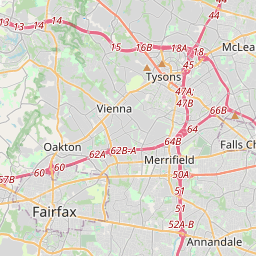Inscription
Make No Little Plans
— Federal Triangle Heritage Trail —
The Federal Bureau of Investigation is headquartered across Pennsylvania Avenue from this spot. Thanks to popular media, it may be one of the better-known government agencies. Since the 1930s Hollywood has found great stories among the "G-men" (government agents). The FBI often cooperates in these productions.The FBI was established in 1908 as the Justice Department's detective unit. Its agents investigated allegations of investment fraud, opium smuggling, munitions trafficking, and other federal crimes. The agency's power increased during national security crisis and as it brought mob figures and other violent criminals to justice. Under the half-century directorship of native Washingtonian J. Edgar Hoover, the bureau grew in responsibility and helped professionalize modern law enforcement, emphasizing scientific analysis. Drawing on a century of experience, the modern FBI protects the nation against terrorist and foreign intelligence threats, enforces U.S. criminal laws, and provides leadership for the nation's law enforcement organizations.
Formerly housed in the Department of Justice building to your left, the FBI relocated across the street in 1975. Designed by Charles F. Murphy, the building's modern brutalist style (from the French "B?ton brut," or raw concrete) contrasts with the earlier buildings of Federal Triangle.
On this corner you can see the Justice Department's classically inspired Art Deco style night doors, torchares (light fixtures), and other decorative aluminum features. High above the doors is a colorful mosaic ceiling by local artist/craftsman John Joseph Earley.
Looking to your left along 10th Street, you can see the continuation of the city's street plan as Federal Triangle buildings frame the view to the National Museum of Natural History.
(Back):
You are standing in the Federal Triangle, a group of buildings whose grandeur symbolizes the power and dignity of the United States. Located between the White House and the Capitol, these buildings house key agencies of the U.S. Government.
The Federal Triangle is united by the use of neoclassical revival architecture, drawing from styles of ancient Greece and Rome that have influenced public buildings throughout the ages. Although each structure was designed for a specific government department or agency, they all share limestone fa?ades, red-tiled roofs and classical colonnades. Their architectural features, following traditions of the Parisian School of Fine Arts (?cole des Beaux-Arts), illustrate each building's original purpose. Most of the Federal Triangle was constructed between 1927 and 1938. However, the Old Post Office and the John A. Wilson Building survive from an earlier era, while the Ronald Reagan Building and International Trade Center was not completed until 1998.
In 1791 Pierre L'Enfant designed a city plan for the new cpaital in Washington under the direction of George Washington and Thomas Jefferson. The L'Enfant Plan overlaid broad avenues on a street grid with areas reserved for prominent buildings and parks. This area originally followed L'Enfant's vision as a center for businesses serving the municipal and federal governments. By the time of the Civil War (1861-1865), it had become a hodgepodge of boarding houses, stables, and light industry. This disarray, and the growing need for government office space, led to calls for redevelopment. In 1901 the Senate Park Commission, known as the McMillan Commission, created a new plan for Washington's parks and monumental areas and redefined the Triangle as a government center. In 1926 Congress authorized a massive building program that drew inspiration from classical architecture to create today's monumental Federal Triangle.
Make No Little Plans: Federal Triangle Heritage Trail is an Official Washington, D.C. Walking Trail. The self-guided, 1.75-mile tour of 16 signs offers about one hour of gentle exercise. Its theme comes from "Make no little plans, they have no magic to stir men's blood. Make big plans," attributed to visionary Chicago architect Daniel Burnham, chair of the McMillan Commission.
For more information on Federal Triangle buildings, please visit www.gsa.gov. For more information on DC neighborhoods and walking tours, please visit www.CulturalTourismDC.org.
Make No Little Plans: Federal Triangle Heritage Trail is produced by the U.S. General Services Administration in collaboration with the District Department of Transportation and Cultural Tourism DC.
Details
| HM Number | HM12SD |
|---|---|
| Tags | |
| Marker Number | 3 |
| Year Placed | 2012 |
| Placed By | Cultural Tourism DC |
| Marker Condition | No reports yet |
| Date Added | Tuesday, September 30th, 2014 at 2:00pm PDT -07:00 |
Pictures
Locationbig map






| UTM (WGS84 Datum) | 18S E 324309 N 4306975 |
|---|---|
| Decimal Degrees | 38.89410000, -77.02585000 |
| Degrees and Decimal Minutes | N 38° 53.646', W 77° 1.551' |
| Degrees, Minutes and Seconds | 38° 53' 38.76" N, 77° 1' 33.06" W |
| Driving Directions | Google Maps |
| Area Code(s) | 202 |
| Closest Postal Address | At or near 800 Pennsylvania Ave NW, Washington DC 20530, US |
| Alternative Maps | Google Maps, MapQuest, Bing Maps, Yahoo Maps, MSR Maps, OpenCycleMap, MyTopo Maps, OpenStreetMap |
Is this marker missing? Are the coordinates wrong? Do you have additional information that you would like to share with us? If so, check in.
Nearby Markersshow on map
Maintenance Issues
- Is this marker part of a series?
- What historical period does the marker represent?
- What historical place does the marker represent?
- What type of marker is it?
- What class is the marker?
- What style is the marker?
- This marker needs at least one picture.
- Can this marker be seen from the road?
- Is the marker in the median?

Comments 0 comments